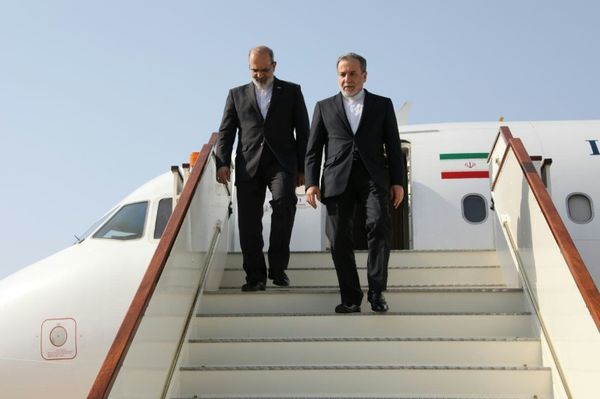When it comes to decarbonising transport, most of the discussion has been about electrifying light vehicles, such as passenger cars.
But a new report has identified that switching to zero-emission trucks would be the fastest and most efficient way to cut emissions.
The electric vehicle (EV) and trucking industries are calling on the government to urgently introduce a strategy to increase uptake of zero-emission trucks, after medium and heavy vehicles were mostly left out of the national EV strategy released last month.
The report from Adiona Tech, a Sydney-based software startup working in fleet decarbonisation, found that electrifying 10 urban delivery trucks reduces emissions equivalent to that of 56 households purchasing their own EV.
For larger trucks, the figures are even more stark. A single road train produces 50 times more CO2 than a passenger car annually.
A truck-sized emissions problem
The report uses ABS figures on kilometres driven, as well as fuel use and fuel type, to calculate average emissions per vehicle type.
Commercial vehicles are often larger, heavier and less fuel efficient than their passenger counterparts. On top of this, they're driven far more regularly.
While the average passenger vehicle produces 2.84 tonnes of CO2 per year, and a taxi 4.9 tonnes, a medium-size delivery truck produces 16.2 tonnes, while a larger truck, like a semi-trailer or road train, expels 111 tonnes.
Passenger vehicles still account for the majority of emissions (52 per cent), simply because there are so may of them, but trucks aren't far behind.
Semi-trailers and road trains make up 1 per cent of vehicles on the roads, but 15 per cent of emissions.
Along with smaller trucks and light commercial vehicles, like utes and vans, they account for 39 per cent of all transport emissions.
But there was little mention of commercial vehicles in last month's national EV strategy, said Adiona Tech CEO Richard Savoie.
"I think seeing it laid out in the federal data gives someone pause when assessing the sheer scope of the difference between passenger vehicles and commercial vehicles," he said.
And while there are technical challenges to rolling out zero-emission road trains, electric light-commercial vehicles and small trucks used for delivery in urban areas are already available.
"This is the low-hanging fruit that Australia should prioritise," Mr Savoie said.
"Ideally, we would start by electrifying the least fuel-efficient vehicles, which spend the most time on the roads."
What's holding back uptake?
There is a mix of demand and supply issues holding back zero-emission truck uptake in Australia, said Samuel Marks, the future transport manager at the Australian Trucking Association (ATA).
"There's limited model availability, we don't have access to all the models coming on the market in North America and Europe," he said.
This supply problem is due to Australia's lack of fuel efficiency standards, which has meant automakers are sending their EVs to other markets.
On top of this, regulations around truck width and axle mass has made it difficult to bring some models into Australia.
On the demand side, high up-front costs are limiting uptake.
"Some zero-emission vehicles cost two to three times the equivalent diesel truck," Mr Marks said.
And although this higher up-front cost may be made back over the truck's lifetime due to lower running costs, many companies don't have the cash reserves to cover the initial expenditure.
Last year, delivery company Team Global Express received $20 million in funding through the Australian Renewable Energy Agency to partly fund the purchase of 60 battery electric delivery vehicles.
The funding was welcome, but smaller fleets typically weren't able to access this type of support, Mr Marks said.
Mr Savoie agreed: "Those federal projects are targeted at very, very large fleets, and they require a lot of relationship building."
"And 60 battery vehicles is less than 2 per cent of their total fleet of 6500 vehicles," he added.
"So it's not going to turn the dial in terms of emissions."
US providing massive purchase incentives for commercial vehicles
The US Inflation Reduction Act (IRA), which was signed into law in August, sets aside billions of dollars to decarbonise medium and heavy trucks.
The legislation includes a tax credit for the purchase of electric commercial vehicles that's equal to 30 per cent of the vehicle's purchase price, up to $US40,000.
"Multiple companies I've talked to say that after ... all of the incentives from the IRA, the purchase of new vehicles and building of the [battery charging] infrastructure is actually a net positive," Mr Savoie said.
"The incentives are so aggressive that they will not lose a dollar in the conversion process."
The US government has signed the memorandum of understanding (MOU) on zero-emission medium and heavy-duty vehicles, which has an interim goal of 30 per cent zero-emission vehicle sales by 2030.
The Electric Vehicle Council, the Australian Trucking Association, the Heavy Vehicle Industry Association, and the Australian Hydrogen Council are calling on the government to sign the international MOU and devise a national zero-emissions truck strategy, including purchase price incentives and greater investment in the charging and hydrogen refuelling network.
The Australian Trucking Association's Samuel Marks said he was surprised by the lack of focus on commercial vehicles in the government's national EV strategy, released on April 19.
"It was essentially a light vehicle emissions strategy," he said.
In response to these calls, a Department of Transport spokesperson said the department was working on plans to reduce emissions across the heavy vehicle sector.
"We expect to have more to say following the Budget," they said.
The spokesperson also said the department was working with regulators to remove barriers to the uptake of heavier low- and zero-emission trucks, such as rules around axle mass limits or vehicle width.
The Albanese government's Driving the Nation fund, announced last year, sets aside $80 million in state and federal money to decarbonise heavy transport with hydrogen refuelling networks on key freight routes.
What zero-emission trucks are available?
The Advanced Clean Transportation Expo, currently being held in Anaheim, California, is the US's main event for zero-emission commercial transport, and a good place to take the temperature of the industry.
This year, there are more than 50 electric models on display, ranging from heavy and medium trucks to delivery vans and utes. Most have an advertised range of 250–500km and take a couple hours to be fully charged.
"Every operator in every fleet and trucking company is here with their wallet out," said Mr Savoie, who's attending the expo.
In January, Tesla announced a $US3.6 billion ($5.2 billion) investment into two new factories in the US state of Nevada to ramp up production of its electric semi-trailer truck, which will have a range of more than 500km.
Australia's large distances mean long-haul interstate trucking may be a challenge to decarbonise, relying on technological improvements in hydrogen trucks and refuelling infrastructure.
But this shouldn't hold back the electrification of the rest of the fleet, Mr Marks said.
"Not every truck is a road train running up to Darwin," he said.
"Over half of fleet in terms of vehicles is in urban areas, and smaller trucks are more numerous than larger trucks."
"There's a significant segment of the fleet that's ready for electrification and the trucks are available globally today."







